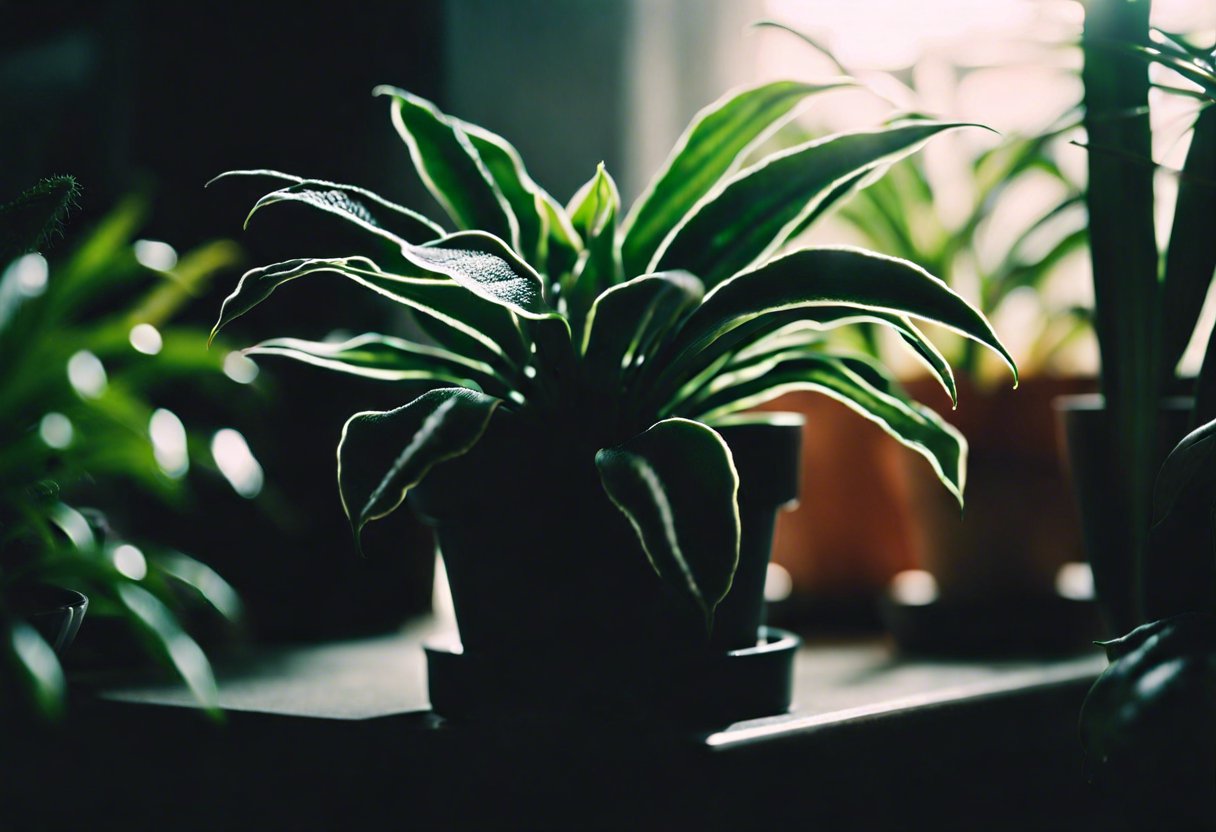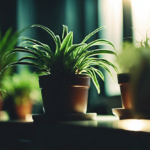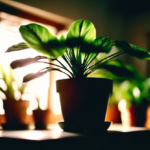Benefits of Low Light Indoor Plants
Indoor plants not only add a touch of green to your living space but also offer various benefits to improve your overall well-being. While some plants require ample sunlight to thrive, there are several low-light indoor plants that can flourish in areas with minimal natural light. These plants are a perfect choice for those who have limited access to sunlight or are looking to beautify spaces that receive little to no direct sunlight. Let’s explore the benefits of incorporating low light indoor plants into your living environment:
1. Improve Air Quality
Indoor air pollution is a common concern, especially in urban areas. Low light indoor plants act as natural air purifiers by removing harmful toxins such as formaldehyde, benzene, and xylene from the air. Plants like the Peace Lily and Snake Plant are known for their air-purifying properties. They convert carbon dioxide into oxygen, creating a healthier and fresher indoor atmosphere.
2. Reduce Stress and Boost Mood
Studies have shown that being around plants can help reduce stress levels and improve overall mood. Low light indoor plants not only enhance the aesthetic appeal of your living space but also contribute to a calming and soothing environment. The presence of greenery indoors can promote relaxation, making you feel more at ease and content.
3. Increase Productivity
Bringing nature indoors has been proven to boost productivity and concentration levels. Studies have shown that having plants in the office or workspace can lead to increased job satisfaction and improved cognitive function. Low light indoor plants in your home office or study area can help create a more conducive environment for work or study.
4. Improve Indoor Climate
Low light indoor plants play a crucial role in regulating indoor humidity levels. They release moisture through a process known as transpiration, which can help combat dry air and reduce the risk of respiratory issues such as dry throat, coughing, or allergies. Plants like Boston Ferns and Areca Palms are known for their humidifying properties.
5. Enhance Sleep Quality
Certain low light indoor plants can also aid in improving sleep quality. Plants such as Lavender and Aloe Vera release soothing fragrances that can help induce a state of relaxation, making it easier for you to fall asleep. These plants create a serene ambiance in the bedroom, promoting a better night’s sleep.
Low light indoor plants into your living space offers numerous benefits for your physical and mental well-being. From purifying the air to reducing stress and enhancing productivity, these plants can truly transform your indoor environment. So why not bring nature indoors and enjoy the many advantages that low light indoor plants have to offer?
Top 10 Low Light Indoor Plants for Beginners
When it comes to indoor plants, finding the right ones for low light conditions can be a challenge, especially for beginners. However, with the right knowledge and plant selection, you can still enjoy the beauty and benefits of greenery in your home. Here are the top 10 low light indoor plants that are perfect for beginners:
1. Snake Plant (Sansevieria)
Snake plants are known for their resilience and ability to thrive in low light conditions. They have striking upright leaves with green and yellow variegation, making them a beautiful addition to any space. Snake plants are also known to improve indoor air quality by filtering out toxins.
2. ZZ Plant (Zamioculcas zamiifolia)
The ZZ plant is another low light champion that can survive in almost any conditions. Its shiny, dark green leaves add an elegant touch to any room. ZZ plants are highly tolerant of neglect, making them an excellent choice for beginners.
3. Pothos (Epipremnum aureum)
Pothos is a popular choice for indoor gardening enthusiasts due to its trailing vines and attractive heart-shaped leaves. It can thrive even in low light conditions and requires minimal care. Pothos plants are also great at purifying the air, cleansing it of various toxins.
4. Dracaena (Dracaena spp.)
Dracaenas come in various sizes and shapes, making them versatile for different home decor styles. They tolerate low light well and can add a touch of tropical elegance to any space. Some popular indoor dracaena varieties include the Mass Cane and the Janet Craig.
5. Chinese Evergreen (Aglaonema)
Chinese evergreen plants are not only low light tolerant but also highly adaptable, requiring minimal maintenance. With their attractive foliage in various shades of green and silver, they can add texture and color to any room.
6. Cast Iron Plant (Aspidistra elatior)
As the name suggests, the cast iron plant is incredibly durable and can withstand harsh conditions, including low light and neglect. Its dark green leaves bring a sense of tranquility to any indoor space.
7. Peace Lily (Spathiphyllum spp.)
The peace lily is a flowering plant that thrives in low light conditions and is known for its air-purifying abilities. Its elegant white flowers and glossy leaves make it a popular choice for indoor gardens.
8. Parlor Palm (Chamaedorea elegans)
The parlor palm is a small and compact plant that can adapt well to low light conditions. It has delicate, feathery fronds that add a touch of tropical beauty to any room.
9. Spider Plant (Chlorophytum comosum)
Spider plants are easy to care for and can tolerate a wide range of light conditions, including low light. They produce cascading foliage with small white flowers, adding a touch of elegance to any indoor space.
10. Philodendron (Philodendron spp.)
Philodendrons come in various shapes and sizes, but many varieties can thrive in low light conditions. Their glossy, heart-shaped leaves make them a visually appealing addition to any room.
When choosing low light indoor plants, it’s important to consider their specific care requirements and the conditions of your home. While these plants are considered low light tolerant, they will still benefit from indirect sunlight and occasional watering. With proper care, these top 10 low light indoor plants will thrive and bring beauty and serenity to your home, even in darker corners.
How to Care for Low Light Indoor Plants
When it comes to creating a thriving indoor garden, low light conditions can present a challenge. However, with the right care and selection of plants, you can still enjoy the beauty and benefits of indoor greenery. In this guide, we will discuss essential tips and techniques for caring for low light indoor plants, ensuring they thrive in your home.
1. Choose the right plants: Not all plants can thrive in low light conditions. It is crucial to select varieties that are well-suited for low light environments. Some popular choices include pothos, snake plants, ZZ plants, and peace lilies. These plants are known for their ability to tolerate low light conditions and require minimal care.
2. Provide adequate light: Although low light plants can survive with minimal sunlight, they still require some light to thrive. Place your plants near a window that receives indirect sunlight or choose areas in your home with bright, ambient light. Avoid exposing them to direct sunlight, as it can scorch their leaves.
3. Avoid overwatering: One common mistake in caring for low light plants is overwatering. These plants generally require less water compared to those in brighter environments. Before watering, make sure the top inch of the soil feels dry to the touch. It is best to water thoroughly but less frequently to prevent root rot.
4. Use well-draining soil: Low light plants don’t perform well in heavy, waterlogged soil. Use a well-draining potting mix that allows excess water to escape. This helps prevent waterlogged roots and encourages healthy growth.
5. Maintain moderate humidity: While low light plants generally do well in average humidity levels, some plants may benefit from higher humidity. Mist your plants with water or place a tray filled with water and pebbles near them to increase humidity levels. However, be cautious not to over-humidify, as it can lead to mold growth.
6. Avoid temperature extremes: Most low light indoor plants prefer moderate temperatures between 65-75°F (18-24°C). Avoid placing them near heaters or in drafty areas. Sudden temperature fluctuations can cause stress and hinder their growth.
7. Prune and clean regularly: Regular pruning helps maintain the shape and overall health of your low light plants. Remove any dead or yellowing leaves to promote new growth. Additionally, gently wipe the leaves with a damp cloth to remove dust buildup, allowing the plants to photosynthesize effectively.
8. Fertilize sparingly: Low light plants generally require less fertilizer compared to their sun-loving counterparts. Over-fertilization can lead to nutrient burn or stunted growth. Use a balanced, water-soluble fertilizer diluted to half its recommended strength, and fertilize your plants every few months during the growing season.
By following these care tips, you can enjoy the beauty of low light indoor plants while creating a healthy and thriving space. Remember to choose the right plants, provide adequate light, water properly, and maintain a suitable environment for their growth. With patience and attention, your low light indoor plants will transform your home into a green oasis of tranquility and natural beauty.
Top Low Light Indoor Plants That Improve Air Quality
When it comes to creating a healthy and vibrant indoor environment, incorporating low light indoor plants can be a game-changer. Not only do these plants thrive in areas with limited natural light, but they also offer a range of benefits, including improving air quality. In this article, we will explore some of the best low light indoor plants that can help enhance the air you breathe in your home or office.
-
Snake Plant – Also known as Sansevieria, this popular indoor plant is a top contender for improving air quality. It excels at filtering out toxins like formaldehyde, trichloroethylene, and benzene. Snake plants are incredibly resilient and can survive in both low light and bright conditions, making them an excellent choice for beginners.
-
Aloe Vera – Apart from its medicinal properties, aloe vera is an effective air purifier. It releases oxygen at night, making it an ideal bedroom companion. Aloe vera also filters out harmful chemicals commonly found in cleaning products, making your indoor air cleaner and healthier.
-
Peace Lily – With its elegant white flowers, the peace lily is not only visually appealing but also a powerful air-purifying plant. It helps eliminate toxins like formaldehyde, benzene, and trichloroethylene, making it an excellent addition to any low light space. However, it’s essential to note that peace lilies can be toxic to pets, so keep them out of reach.
-
Spider Plant – Spider plants are known for their ability to remove common indoor air pollutants like formaldehyde and xylene. These easy-to-grow plants thrive in low light conditions, making them an ideal choice for areas such as hallways or bathrooms where natural light is limited.
-
Chinese Evergreen – The Chinese evergreen is a low light indoor plant that thrives in areas with minimal sunlight. It effectively removes toxins like benzene and formaldehyde from the air, helping to improve indoor air quality. With its variegated leaves, it also adds a touch of beauty to any space.
-
Dracaena – Dracaena plants are excellent for purifying indoor air. With varying leaf shapes and sizes, dracaenas are often prized for their decorative appeal. These plants filter out pollutants like formaldehyde, benzene, and trichloroethylene, making them a popular choice for offices or homes with low light conditions.
-
Boston Fern – Boston ferns thrive in humid environments, making them perfect for bathrooms or kitchens. Besides adding a touch of greenery, Boston ferns remove formaldehyde and other harmful toxins from the air, creating a fresher and cleaner indoor environment.
-
Golden Pothos – Golden Pothos, also known as Devil’s Ivy, is renowned for its ability to purify the air. It is highly adaptable and can thrive in low light settings. Golden Pothos helps to remove toxins such as formaldehyde, benzene, and xylene, creating a healthier atmosphere.
By incorporating these low light indoor plants into your living or working space, you can enjoy the benefits of improved air quality and a greener environment. Remember to choose plants that suit your specific environment and follow proper care instructions for the best results. With a little bit of effort, you can create a healthier and more inviting indoor space with the help of these remarkable plants.
Creative Ways to Enhance Home Decor with Low Light Indoor Plants
Low light indoor plants are not only beneficial for their air-purifying properties, but they also have the potential to enhance the overall aesthetics of your home decor. With their lush green leaves and unique shapes, these plants can act as striking focal points or elegant accents in any room. Here are some creative ways to incorporate low light indoor plants into your home decor:
1. Hanging Planters
One creative way to introduce low light indoor plants into your home decor is by using hanging planters. These suspended pots can be attached to the ceiling or mounted on the walls, adding a touch of greenery to even the smallest of spaces. Consider placing trailing plants, such as the pothos or spider plant, in these planters to create a cascading effect that adds visual interest to your walls.
2. Terrariums
Another beautiful way to display low light indoor plants is by using terrariums. These glass containers create a miniature world for your plants, allowing you to showcase different varieties in a single arrangement. Choose low light tolerant plants like ferns, mosses, or snake plants and create a lush terrarium that adds a unique and captivating element to your home decor.
3. Plant Stands
Plant stands are not only functional but also add a stylish touch to your indoor plant collection. Place your low light plants on elevated plant stands to create height variations and drama in your space. Wooden or metal stands can complement a range of decor styles, from modern to bohemian, while adding a touch of sophistication.
4. Grouping and Layering
Consider grouping low light plants together to create a visually appealing display. Choose plants with varying heights, textures, and leaf shapes to add dimension. Additionally, layering plants on shelves or plant stands can create a lush and vibrant display, transforming any corner of your home into a miniature indoor garden.
5. Wall Mounted Displays
For a unique and eye-catching way to incorporate low light indoor plants into your home decor, consider using wall-mounted displays. These vertical displays allow you to create living art on your walls. Choose plants with interesting leaf patterns, such as the prayer plant or calathea, and mount them on a wall-mounted planter or vertical garden system.
Low light indoor plants offer both aesthetic and functional benefits in enhancing your home decor. By exploring these creative ways to incorporate them into your space, you can transform your home into a green oasis that is visually appealing, calming, and refreshing.
Conclusion
To sum up, low light indoor plants offer a wide range of benefits, making them an excellent choice for beginners looking to bring some greenery into their homes. The top 10 low light indoor plants mentioned earlier, such as the snake plant, pothos, and ZZ plant, are not only easy to care for but also resilient in low light conditions. By following some simple care instructions, such as avoiding overwatering and providing indirect sunlight, these plants can thrive and beautify any indoor space.
Aside from their decorative purposes, low light indoor plants also serve as natural air purifiers, making them an excellent addition to any home. Plants like the peace lily, spider plant, and English ivy are known for their ability to filter and improve indoor air quality by reducing common toxins. With their lush green leaves and air-purifying properties, these plants not only bring life to a room but also contribute to a healthier living environment.
Furthermore, incorporating low light indoor plants into home decor can be a creative and visually appealing way to enhance any living space. From hanging planters to terrariums and wall-mounted planters, there are various innovative ways to display these plants and add a touch of nature to the interior design. By utilizing different planters, containers, and plant stands, one can create unique and eye-catching arrangements that complement the overall style and ambiance of a room.
Low light indoor plants offer numerous benefits and are well-suited for beginners. Their ability to thrive in low light conditions, coupled with their air-purifying qualities, make them an excellent choice for individuals looking to beautify their homes while improving indoor air quality. By following basic care guidelines and exploring creative ways to incorporate low light indoor plants into home decor, anyone can enjoy the benefits of these green companions. So why not embrace the beauty of low light indoor plants and bring a touch of nature into your living space? With a little love and care, these plants can transform any room into a healthier, more vibrant sanctuary.


